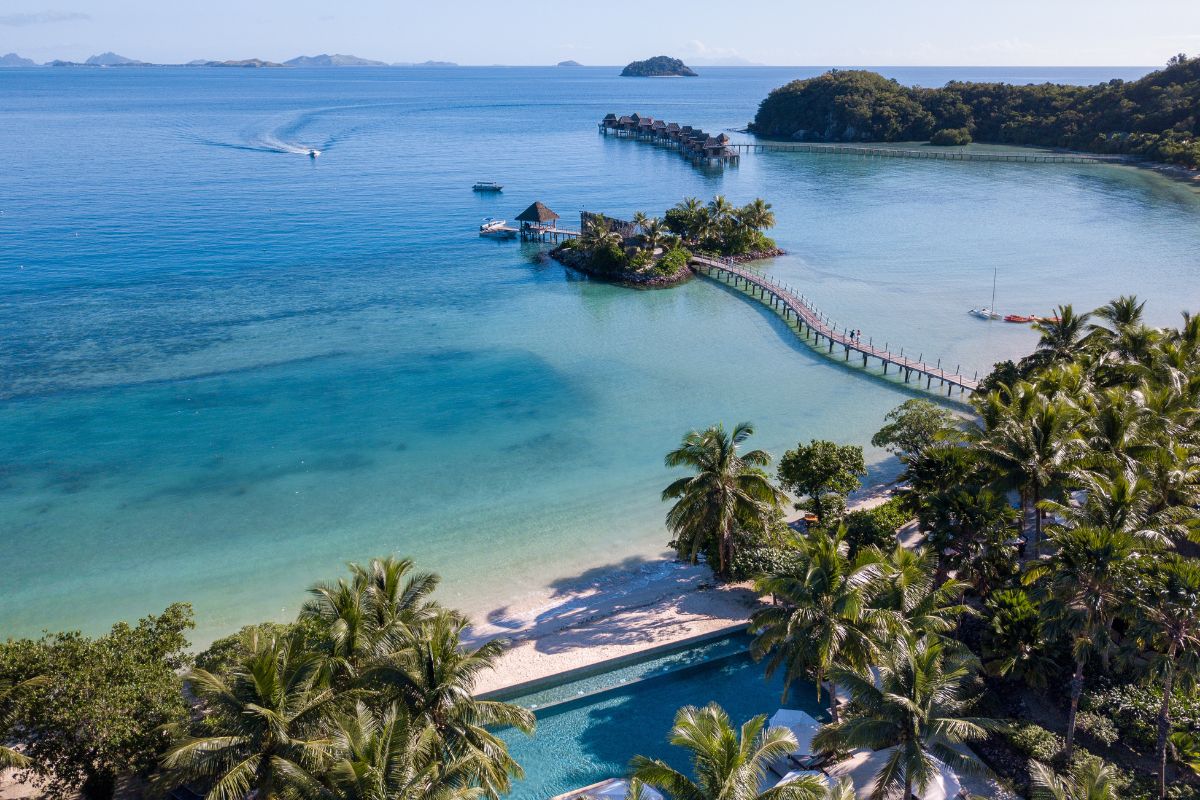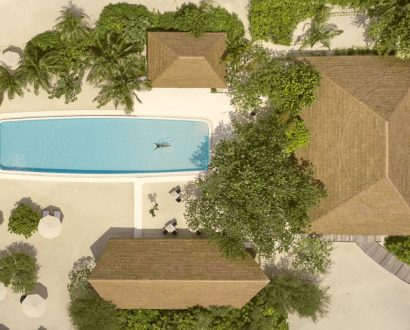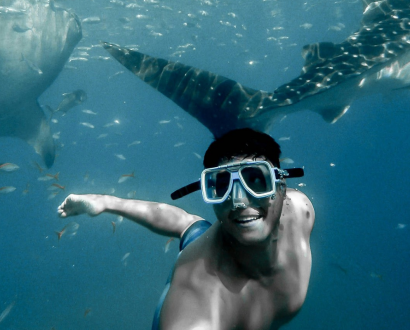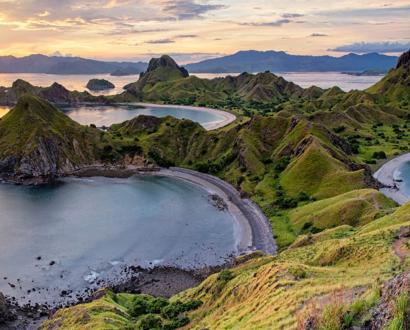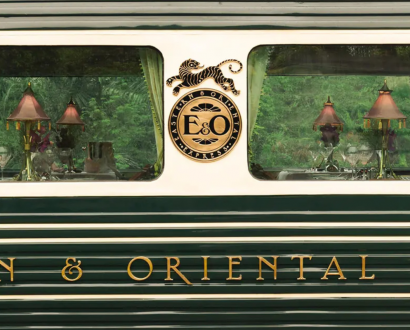When I pictured myself relaxing at Fiji’s luxurious Likuliku Lagoon Resort, this is not exactly what I had in mind. I imagined I might be lazing poolside with a cocktail in hand, having an indulgent massage in the spa or perhaps lying in a hammock while gazing at the brilliant blue sky framed by coconut trees gently swaying in the breeze.
But all of that can wait. Because right now, I’m sitting in an armchair in the resort’s open-air lobby with a Fijian crested iguana named Malolo perched contentedly on my shoulder. And at this moment, there’s nowhere else I’d rather be.
I’m sitting in an armchair in the resort’s open-air lobby with a Fijian crested iguana named Malolo perched contentedly on my shoulder.
I know how lucky I am to be having this encounter with this beautiful green reptile, given that less than two decades ago, the species was believed to be extinct on Malolo Island, where the resort is located.
The Fijian crested iguana was under threat due to destruction of its tropical dry forest habitat, in addition to the impact of introduced predators such as cats and rats. For more than 25 years, there were no sightings of the species on this island. That is, until one fell out of the sky – literally.
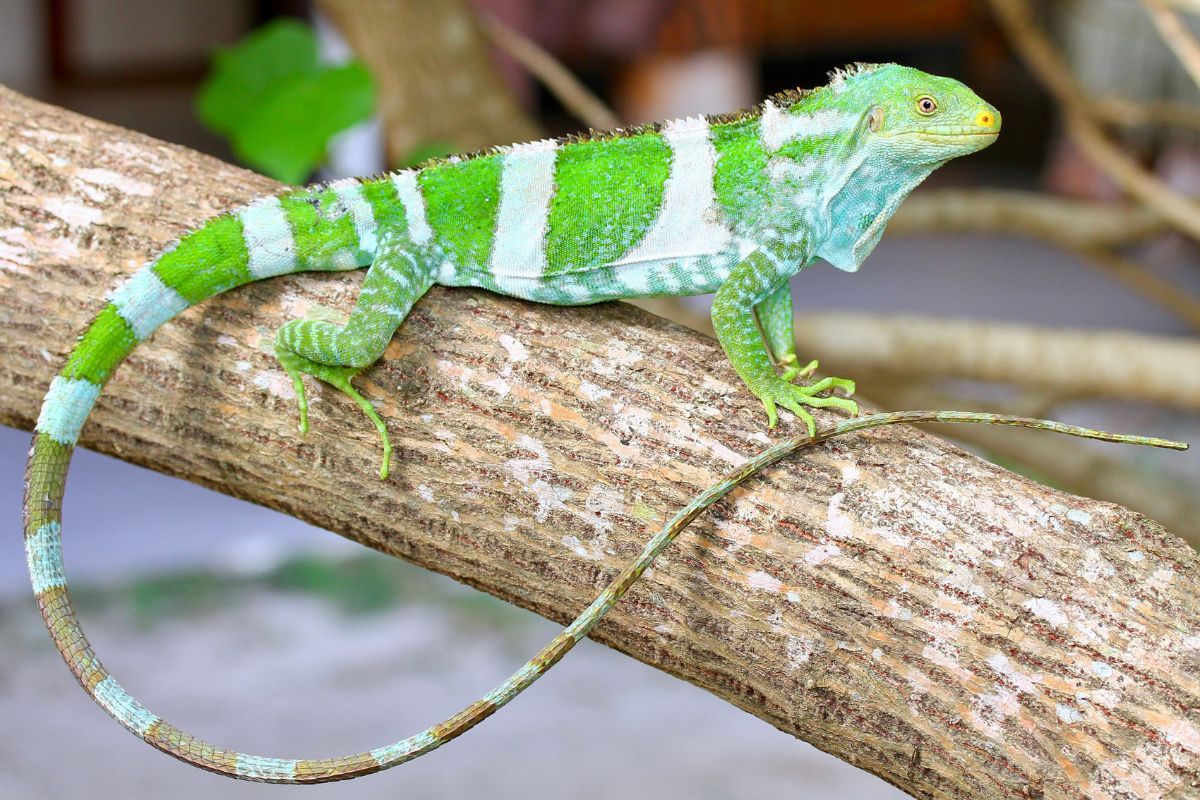
Back from the brink
In 2010, a groundskeeper at Likuliku Lagoon Resort was working in the gardens when an injured iguana unexpectedly landed at his feet, perhaps having fallen out of a nearby tree.
Thinking it was a baby dinosaur, the terrified gardener dropped his rake and ran. Unfortunately, the iguana died, but DNA tests revealed that the specimen was a bona fide Fijian crested iguana, confirming that the species had been rediscovered.
The following year, a male iguana was found at nearby Malolo Island Resort, followed a few months later by the discovery of a female at Likuliku Lagoon Resort. A feral cat removal program was introduced, and followed by a captive breeding program in 2016.
Guests can also opt to participate in iguana spotting surveys at night, or even sponsor and name one of the new baby iguanas.
Since then, Likuliku Lagoon Resort has worked in partnership with conservation organizations, including the San Diego Zoo, National Trust Fiji and the US Geological Survey, to protect these rare iguanas. Field surveys have revealed small, isolated Fijian crested iguana populations on Malolo Island, including a growing population at Likuliku Lagoon Resort.
A quick scroll through the resort’s social media posts reveals that the breeding program is a great success, with four captive breeding pairs and regular posts announcing new babies. Thirteen-year-old Malolo is now the proud father of five offspring.
When they are old enough, the hatchlings are tagged and released into the dry forest. At the time of writing, there are 76 tagged iguanas living in the wild on the island.
Resort guests can not only meet Malolo, but also participate in conservation efforts to protect the species. They can get their hands dirty in the resort’s purpose-built nursery or helping to plant seedlings to restore the dry forest habitat. The resort aims to plant 10,000 new trees per year.
Guests can also opt to participate in iguana spotting surveys at night, or even sponsor and name one of the new baby iguanas.
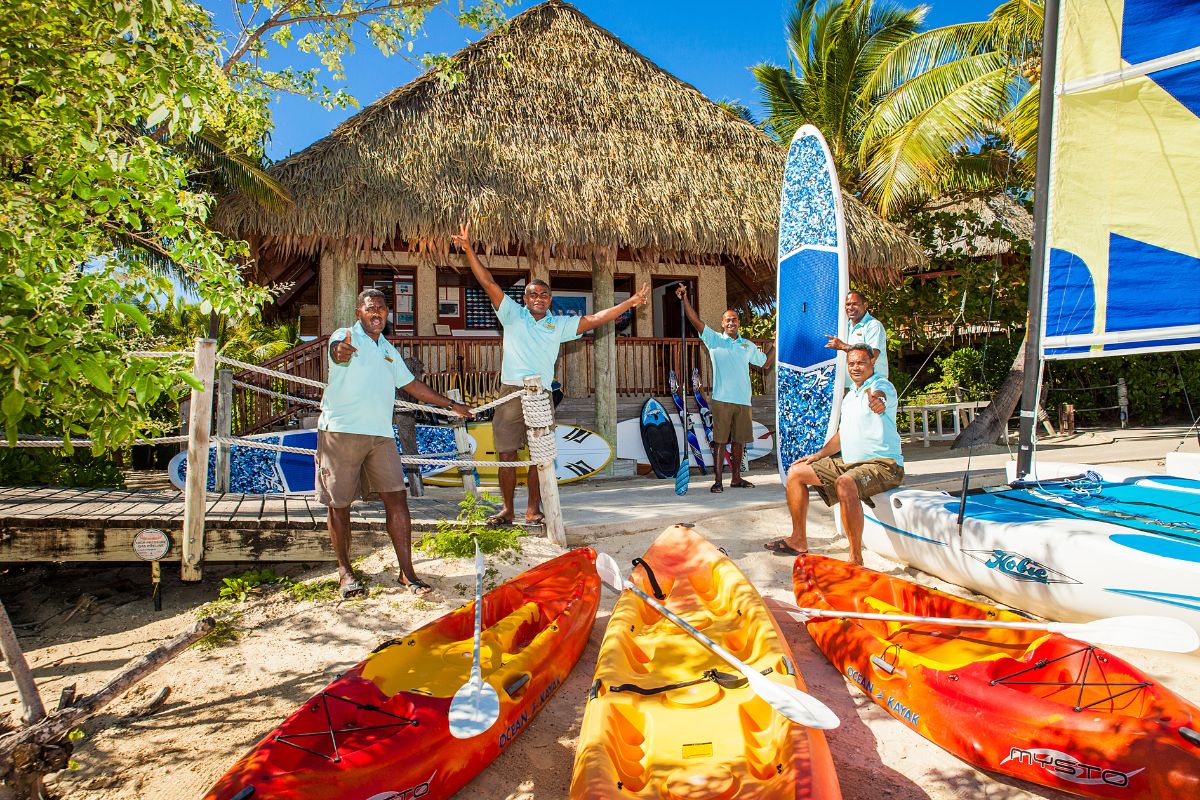
Beneath the surface
For myself and my traveling companions, Malolo is undoubtedly the star attraction at Likuliku Lagoon Resort, but he has some fierce competition from his underwater neighbors.
As I wander across the boardwalk to the island bar and jetty, I stop to watch two juvenile (harmless) blacktip reef sharks frolicking in the shallows of the crystal clear lagoon.
I could stay and watch them for hours (after all, I’m on what the locals call ‘Fiji time’), except I have my snorkel and flippers in hand, the sun is shining brightly and the warm azure water is calling my name.
Actually, it’s not exactly the water that’s calling my name, it’s the friendly staff passing by. Everywhere I go, I’m greeted by bright smiles, big waves and a chorus of, “Bula, bula!” And despite the fact that I only arrived yesterday, everyone knows my name.
In fact, it’s a bit crowded in the lagoon – not because of the other guests (I can only see a few other people snorkeling nearby and a couple of others on kayaks in the distance), but because of the abundance of marine life.
When I reach the jetty, I ask the staff which direction I should snorkel if I’m hoping to see a turtle. They smile, shrug and tell me that I’ll have a good chance anywhere in the bay.
And then one of them suddenly points to right. “Over there!” he exclaims.
“OK, great, I’ll head that way,” I say, pulling my snorkel onto my head.
“No,” he says, grinning. “Over there – there’s a turtle just over there!”
I look to where he’s pointing and sure enough, right on cue, a turtle pops its head out of the water just meters away from us.
Of course, by the time I get my snorkeling gear on, the turtle is long gone – probably heading to the far side of the lagoon to feast on seagrass. But that doesn’t matter, because there’s a whole underwater paradise for me to explore.
In fact, it’s a bit crowded in the lagoon – not because of the other guests (I can only see a few other people snorkeling nearby and a couple of others on kayaks in the distance), but because of the abundance of marine life. As soon as I put my face underwater, I’m surrounded brightly colored tropical fish darting in and out of equally vibrant coral formations.
In 2005, the waters and reef in front of Likuliku Lagoon Resort were declared a Marine Protected Area, or Na Tabu, by the Paramount Chief of the Mamanuca Islands at the time. Just as the resort is committed to conserving the iguanas, it is also dedicated to protecting and restoring the house reef and marine life.
Likuliku Lagoon Resort has implemented a coral planting program, which guests are welcome to participate in. This assists with regenerating the fragile coral reef ecosystem, as well as eliminating invasive species such as the crown-of-thorns starfish.
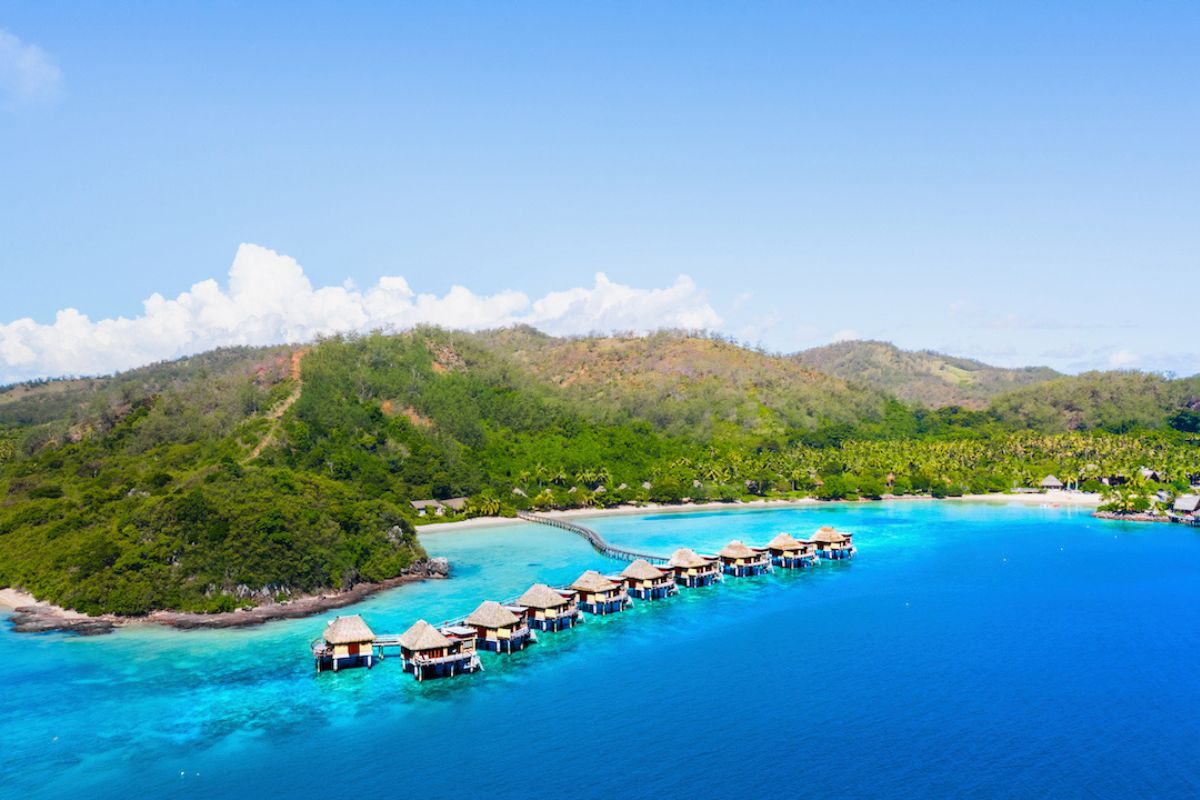
Slice of paradise
The resort’s marine conservation program extends to nearby Mociu Island (aka Honeymoon Island). Just a 15-minute boat ride away, this tiny, uninhabited island is available for the exclusive enjoyment of guests staying at Likuliku Lagoon Resort and sister property Malolo Island Resort.
Our group enjoys a private picnic on the beach at Mociu Island, where we spend two hours swimming in the sparkling water and snorkeling around the island on the fringing reef, interspersed with some grazing and lazing on the shaded daybed.
A few people decide to embark on a short hike to the top of the island to take in the view, but I’m too busy snorkeling in the sandy shallows with a small blue-spotted ray.
When the boat arrives to take us back to Likuliku Lagoon Resort, we leave the little island reluctantly, pondering if perhaps we could be castaways for the night, eat our leftover picnic food for dinner and sleep on the daybed.
Of course, leaving Mociu Island is made easier by the fact that we’re heading back to another slice of paradise.
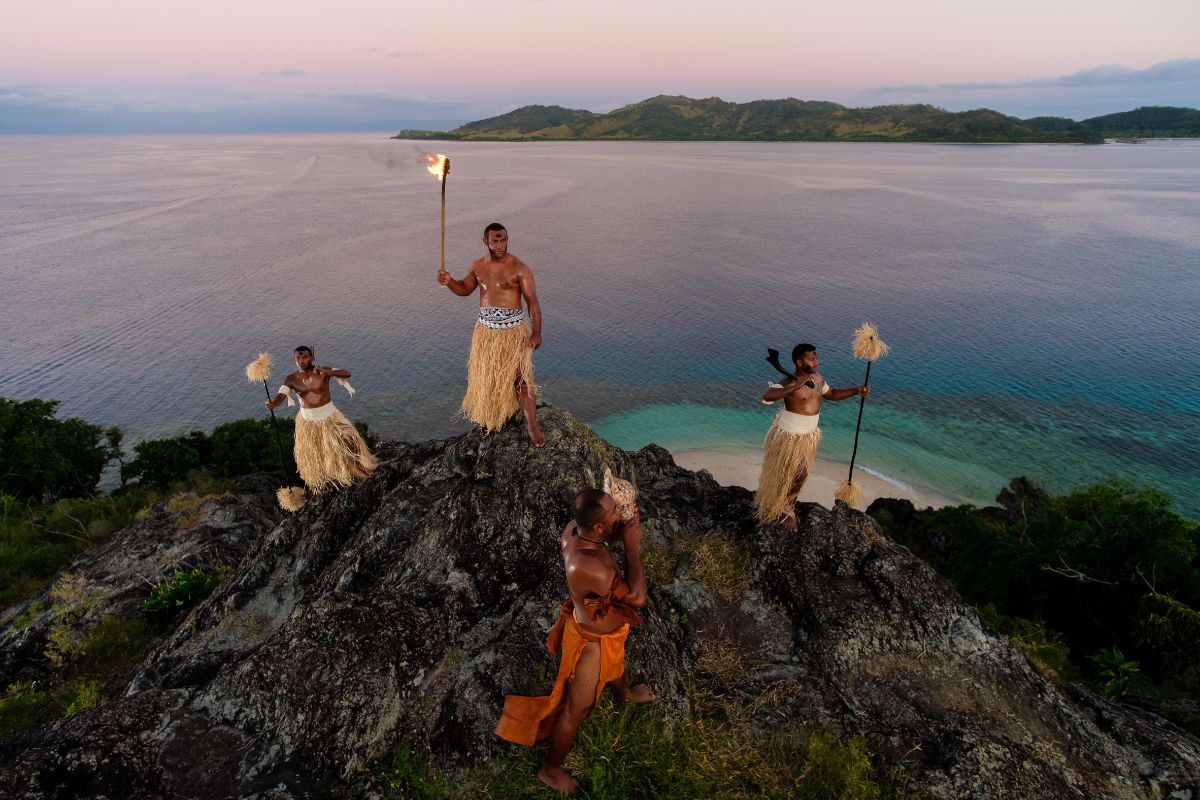
Calm waters ahead
Nestled in a pristine turquoise lagoon, Likuliku means ‘calm waters’ – and it certainly does have a calming effect. As you approach Likuliku Lagoon Resort from the water, it resembles an ancient Fijian village, with the traditionally designed bures blending seamlessly into the surrounding tropical vegetation.
Of course, you probably wouldn’t find overwater bures in a traditional village, but here, you can’t miss the idyllic row of 10, perched on the edge of the reef.
Other resorts in Fiji offer similar accommodation, but there are none quite like this. Likuliku Lagoon Resort is proudly the first and only resort in Fiji with authentic overwater bures situated in a natural ocean lagoon and surrounded by a protected marine sanctuary.
On Friday nights, the rich Fijian culture comes alive as staff perform the meke, a traditional Fijian dance.
The adults-only resort is also one of only a handful of luxury resorts in Fiji that’s owned and operated by Fijians. Many of the staff truly are locals – they live in nearby Yaro village and travel to work by boat each day, and resort guests are welcomed into their village for tours.
On Friday nights, the rich Fijian culture comes alive as staff perform the meke, a traditional Fijian dance. Afterwards, guests can enjoy a lovo (food cooked in an earth oven) feast and South Pacific barbecue.
I can only assume it’s that warm Fijian hospitality that keeps guests coming back to Likuliku Lagoon Resort year after year.
Tulia Seru joined the resort prior to its 2007 opening as Executive Housekeeper, before being promoted to Resort Manager in 2012. Many of the return guests are like family to her and she laughs fondly as she tells stories about the people who keep coming back to the resort, making it their home away from home.
One couple from Australia recently visited for their 29th time in 16 years, and I have no doubt that the staff will give them an extra-special welcome when they arrive for their 30th visit later this year.
As for me, it’s only day two of my first visit, but I already know that I’ll be back.
How to get to Likuliku Lagoon Resort
Fiji Airways flies direct to Nadi from the United States, Hong Kong, Singapore, Japan, Australia, New Zealand, Samoa, Tonga, Tuvalu, Kiribati, Vanuatu and the Solomon Islands.
Rosie Holidays (www.rosiefiji.com) offers transfers from the airport to Port Denarau Marina. From there, guests can catch a short water taxi or catamaran to Malolo Island.
Alternatively, helicopter transfers from the airport are also available.
For more information or help planning your Fiji holiday, visit Likuliku Lagoon Resort at www.likulikulagoon.com or Tourism Fiji at www.fiji.travel.

